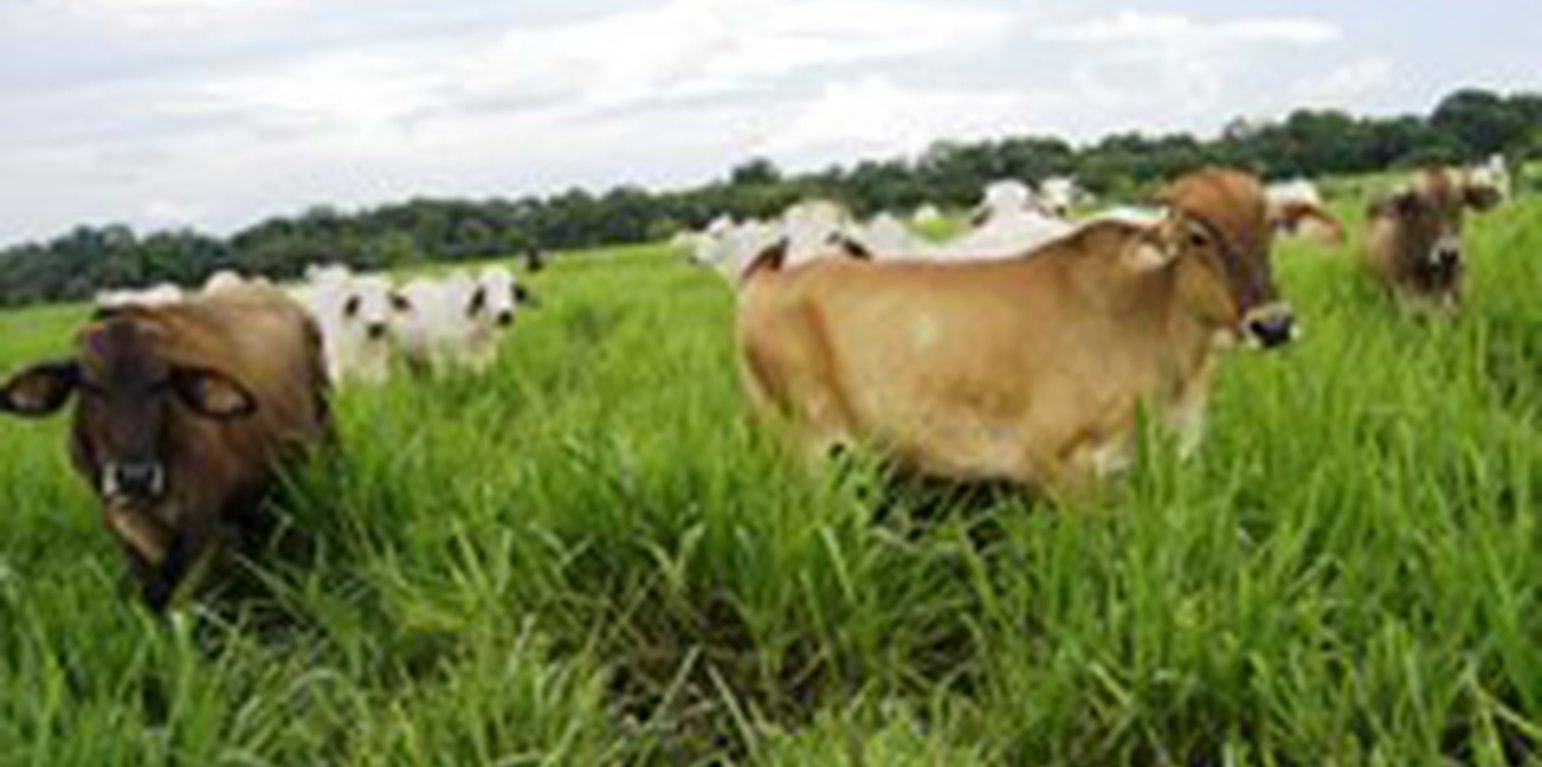



Technological recommendations are presented to increase the productivity of degraded pastures, one of the main problems of cattle raising in the Orinoquia. It is a technology of easy application by farmers, which is carried out according to the degree of degradation of the pastures. In the case of pastures that have large amount of grasses, but their vigor is low and forage production is slow, it is recommended to recover pastures. When the grass population is low and the pasture has been invaded by other species that cannot be used to feed the livestock, it is necessary to renovate pastures.
For the recovery, vertical tillage as chisel plow is recommended, at a shallow depth to avoid the damage caused by the agricultural machinery. This tillage has to be complemented with fertilization with minerals such as phosphorus (P), calcium (Ca), magnesium (Mg), potassium (K), sulfur (S) and nitrogen (N).
For the renovation of pastures, the used species are Urochloa decumbens, Urochloa humidicola, Urochloa brizantha, and other hybrids of Urochloa. It is recommended more intense tillage of the soil through mechanical implements, such as the spike harrow or disk harrow, complemented with fertilization. In addition, soil cover, N content, and soil nutrition can be improved by introducing legumes such as Pueraria phaseoloides cv Kudzu tropical, Stylosanthes capitata cv Capica, Desmodium heterocarpum cv Maquenque, or forage peanut (Arachis pintoi).
In the renewed grasslands the forage production increased by more than 100% for at least three consecutive years. On the other hand, as a result of the efficient association of forage legumes with grasses, animal productivity is 50% higher than in pure grass pastures fertilized with 50 kg/ha of nitrogen.
Pasture improvement is a good SLM practice since it results in a higher vegetation cover that protects the soil and, over time, leads to an increase in organic matter and soil biota.
The grassland recovery and renovation should be complemented by good grazing cattle management, which is restarted 2 to 3 months after the treatments have been applied. It is recommended to divide the paddocks for rotational grazing to allow the grasses to rest and produce new shoots and avoid overgrazing, which can cause further deterioration of the pastures.
With the renovation and good grassland management, animal production increased by 160-300% compared to degraded grasslands. On the other hand, daily milk production per cow increased by 22%, and milk produced during lactation in one hectare increased by 175%.
In the improved pastures, more animals can be grazed on a smaller area, which reduces the area devoted to livestock farming and reduces the pressure on forests that have traditionally been cleared for pasture.
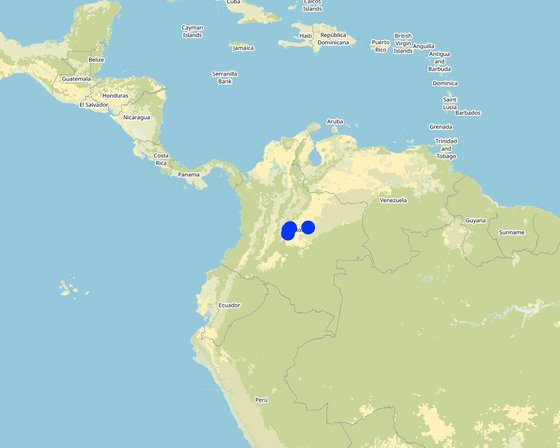
สถานที่: Departamentos del Meta, Vichada, Casanare, โคลอมเบีย
ตำนวนการวิเคราะห์เทคโนโลยี: 10-100 แห่ง
การเผยแพร่ของเทคโนโลยี: กระจายไปอย่างสม่ำเสมอในพื้นที่
In a permanently protected area?: ไม่ใช่
วันที่ในการดำเนินการ: 1999; 10-50 ปี
ประเภทของการแนะนำ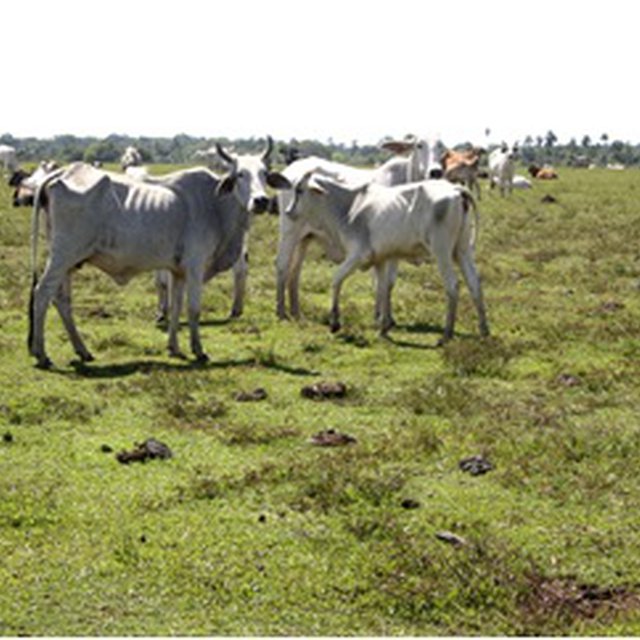
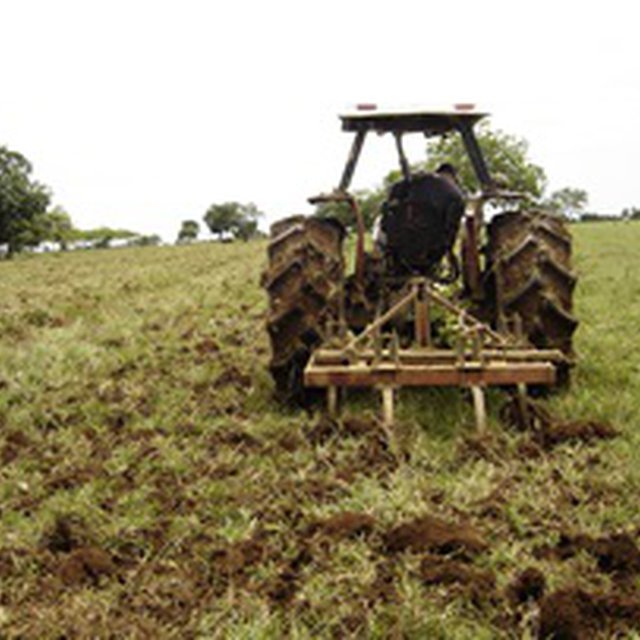

| Species | Count |
| cattle - dairy | n.a. |
| cattle - non-dairy beef | n.a. |




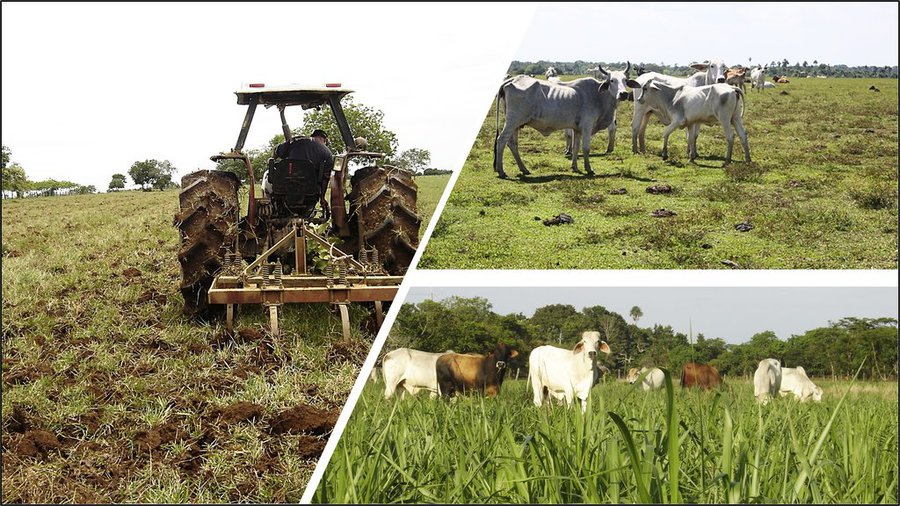
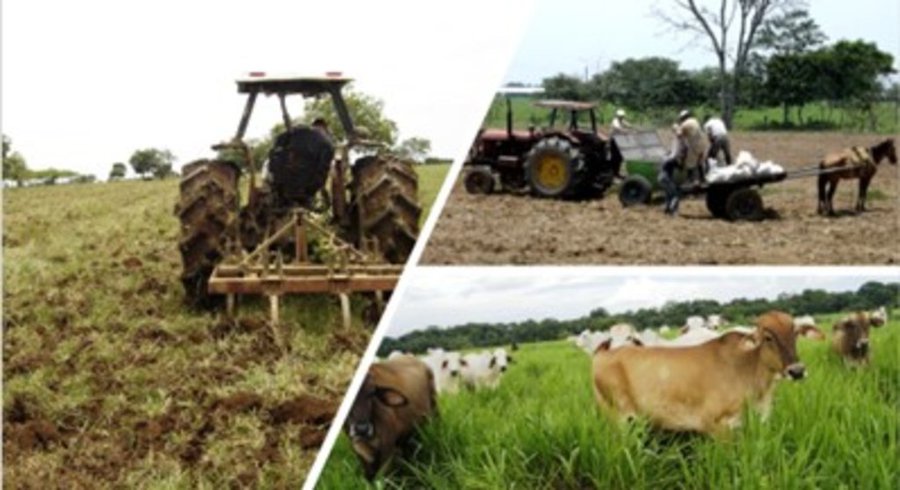
| ปัจจัยนำเข้า | หน่วย | ปริมาณ | ค่าใช้จ่ายต่อหน่วย (n.a.) | ค่าใช้จ่ายทั้งหมดต่อปัจจัยนำเข้า (n.a.) | %ของค่าใช้จ่ายที่ก่อให้เกิดขึ้นโดยผู้ใช้ที่ดิน |
| แรงงาน | |||||
| Siembra y fertilización | 0.5 | 65000.0 | 32500.0 | ||
| Control de hormigas en la siembra | 1.0 | 65000.0 | 65000.0 | ||
| อุปกรณ์ | |||||
| Pase de cincel | 1.0 | 100000.0 | 100000.0 | ||
| Pase de rastra | 1.0 | 100000.0 | 100000.0 | ||
| Pase de pulidor | 1.0 | 80000.0 | 80000.0 | ||
| Siembra y aplicación de fertilizantes con encaladora | 1.0 | 80000.0 | 80000.0 | ||
| Control de malezas de fumigación | 1.0 | 80000.0 | 80000.0 | ||
| วัสดุด้านพืช | |||||
| Semilla de pasto | 6.0 | 40000.0 | 240000.0 | ||
| Semilla de leguminosa (ej. Desmodium heterocarpon) | 0.5 | 100000.0 | 50000.0 | ||
| ปุ๋ยและสารฆ่า/ยับยั้งการเจริญเติบโตของสิ่งมีชีวิต (ไบโอไซด์) | |||||
| Cal dolomítica | 8.0 | 11000.0 | 88000.0 | ||
| Escorias Tomas | 12.0 | 25000.0 | 300000.0 | ||
| Yeso agrícola | 3.0 | 28000.0 | 84000.0 | ||
| Cloruro de potasio | 1.0 | 86000.0 | 86000.0 | ||
| Insecticida para control de hormiga | 1.0 | 7000.0 | 7000.0 | ||
| Herbicida para control de arvenses antes de siembra | 2.0 | 17000.0 | 34000.0 | ||
| อื่น ๆ | |||||
| Transporte externo de insumos | 1400.0 | 60.0 | 84000.0 | ||
| Transporte interno de insumos | 1200.0 | 40.0 | 48000.0 | ||
| ค่าใช้จ่ายทั้งหมดของการจัดตั้งเทคโนโลยี | 1'558'500.0 | ||||
| Total costs for establishment of the Technology in USD | 410.13 | ||||
| ปัจจัยนำเข้า | หน่วย | ปริมาณ | ค่าใช้จ่ายต่อหน่วย (n.a.) | ค่าใช้จ่ายทั้งหมดต่อปัจจัยนำเข้า (n.a.) | %ของค่าใช้จ่ายที่ก่อให้เกิดขึ้นโดยผู้ใช้ที่ดิน |
| แรงงาน | |||||
| Aplicación de abonos de mantenimiento | Jornal | 0.5 | 65000.0 | 32500.0 | |
| อุปกรณ์ | |||||
| Voleadora para aplicar los abonos | pase | 1.0 | 80000.0 | 80000.0 | |
| ปุ๋ยและสารฆ่า/ยับยั้งการเจริญเติบโตของสิ่งมีชีวิต (ไบโอไซด์) | |||||
| Fosfato diamonico | Bulto de 50 kg | 2.0 | 105000.0 | 210000.0 | |
| Sulfato de magnesio | Bulto de 50 kg | 2.0 | 64000.0 | 128000.0 | |
| Cloruro de potasio | Bulto de 50 kg | 1.0 | 86000.0 | 86000.0 | |
| อื่น ๆ | |||||
| Transporte externo de insumos | 250.0 | 60.0 | 15000.0 | ||
| Transporte interno de insumos | 250.0 | 40.0 | 10000.0 | ||
| ค่าใช้จ่ายทั้งหมดของการบำรุงรักษาสภาพเทคโนโลยี | 561'500.0 | ||||
| Total costs for maintenance of the Technology in USD | 147.76 | ||||
จำนวนก่อน SLM: 700 kgMS/h
หลังจาก SLM: 1200 kgMS/h
จำนวนก่อน SLM: 7% proteína cruda
หลังจาก SLM: 9% proteína cruda
จำนวนก่อน SLM: 110 kg/ha/año de carne
หลังจาก SLM: 475 kg(ha/año de carne)
Es la productividad de de carne bovina
จำนวนก่อน SLM: 0
หลังจาก SLM: $863.000/ha/año
Uso de abonos
por mayor ganancia de peso de los animales
จำนวนก่อน SLM: $495.000/ha/año
หลังจาก SLM: 2.175.200/ha/año
จำนวนก่อน SLM: 50%
หลังจาก SLM: 80%
Cobertura del suelo con las especies forrajeras
จำนวนก่อน SLM: 1,5 g/cc
หลังจาก SLM: 1,2 g/cc
Densidad aparente disminuyó por cobertura del suelo
จำนวนก่อน SLM: 50%
หลังจาก SLM: 80%
จำนวนก่อน SLM: 700 kgMS/ha
หลังจาก SLM: 1200 kgMS/ha